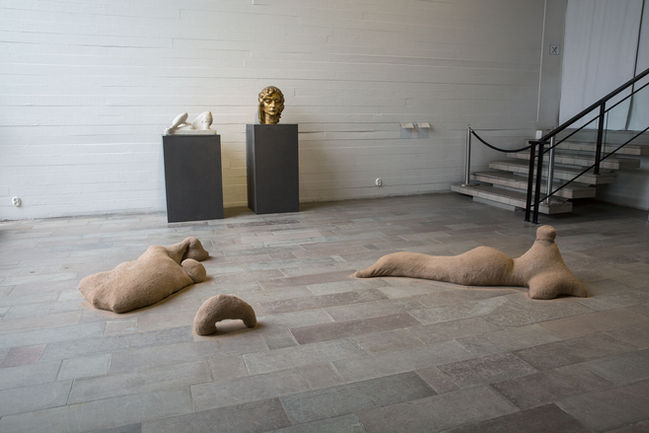Open Greenhouse
(collaboration with Minnamari Toukola, ongoing project)
located in Vallila, Helsinki. Installation in Graffiti Group show at HAM 6.4. - 9.9.2018
Open Greenhouse
(collaboration with Minnamari Toukola, ongoing project)
located in Vallila, Helsinki. Installation in Graffiti Group show at HAM 6.4. - 9.9.2018
Open Greenhouse
(collaboration with Minnamari Toukola, ongoing project)
located in Vallila, Helsinki. Installation in Graffiti Group show at HAM 6.4. - 9.9.2018
Exhibitions:
Slow slow, it's fingers gently grasping
20.10.2017 - 14.1.2018, Wäinö Aaltonen Museum, Turku
Kehonkuva / Body Image group show curated by Pia Oksanen, works by Artor Jesus Inkerö, Essi Kausalainen, Reija Meriläinen, Sini Pelkki ja Jani Ruscica, Aurora Reinhard, Iiu Susiraja, Masi Tiitta, Anna Torkel and Salla Tykkä. Photos Sauli Sirviö and Niina Tervo.
I have been contemplating how our bodies, as well as the bodies of other biological beings, function as organisms on their own and in connection with others. I’m interested in how they function from a biologic-philosophical perspective: how different parts operate independently, join together and produce a functional machine, which directs and produces thoughts. To what extent is consciousness separate or connected with other beings external to the self and to our environment?
I approach the body as a machine that generates thoughts. I explore this topic from a human perspective, but I think that the same qualities and biological functions have emerged in other organisms as well. The idea the body’s role in the thinking process is based on a research in which the human intestines and its bacteria were found to be connected to the brain and are therefore part of the thinking process and emotions. The idea of the mind as an integral part of the body challenges not only the idea of the brain as the source of all thinking, but also the idea of a human as somehow special in relation to other species. If bacteria can affect our emotions, are we individual and separate from our environment after all? The human body is a home to approximately 2kgs of bacteria, which amounts to ten times more bacteria than there are human cells in it.
The material nature of a thought raises the question of what a thought might be as energy. How is it born, how does it move, and in what kind of an energetic whole do we live in? A thought is electrical energy that moves in the nervous system throughout the body. How do we use energy to communicate with each other and with the inanimate world? Does energy move outside of us and do we receive energy as a thought or information in some way other than through light, heat, movement, or sound? In post-humanistic thinking this could mean, for example, that the concept of the cycle of energy further challenges our individuality: perhaps thoughts are part of our environment and its changing energetic state.
Artists sometimes refer to the ‘knowledge of hands, by which they mean focusing on the tactile sense and intuitive movement. The evolution of our conceptual thinking bases in large part on our bodily experiences and their metaphorical expansion. Intuitive thinking benefits both hemispheres of the brain, as knowledge from both learning and experience forms new connections. Intuitive thinking leaves room for the body to interact with the materials that are being worked on, and to receive the information that the material contains. In such a situation, creating art is a facet of the thinking process and the works of art are its manifestations. Rational thought, for its part, considers the progress of the work. Binary thinking between the mind and body, the body and material, and thought and a work of art fades.
Slow, slow its fingers gently grasping (2017) Jute, sand, thread.
Overview, Slow slow it's fingers gently grasping, Sand, jute, 2017






















